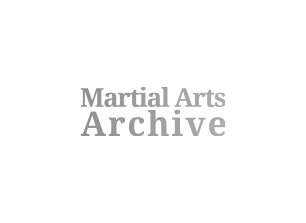Elements
Elements
- Country :
- Republic of Korea,Democratic People’s Republic of Korea
Description :
Ssireum is a type of wrestling in which two players wearing long fabric belts around their waists and one thigh grip their opponents’ belt and deploy various techniques to send them to the ground. The winner of the final game for adults is awarded an ox, symbolizing agricultural abundance, and the title of ‘Jangsa’. When the games are over, the Jangsa parades around the neighborhood riding the ox in celebration. Ssireum games take place on sand in any available space in a neighborhood, and are open to community members of all ages, from children to seniors. They are played on various occasions, including traditional holidays, market days, and festivals. Different regions have developed variants of ssireum based on their specific backgrounds, but they all share the common social function of ssireum – enhancing community solidarity and collaboration. As an approachable sport involving little risk of injury, ssireum also offers a means of improving mental and physical health. Koreans are broadly exposed to ssireum traditions within their families and local communities: children learn the wrestling skills from family members; local communities hold annual open wrestling tournaments; and instruction on the element is also provided in schools.
Transmission method :
The first literary record about Ssireum comes from Goryeosa (the history of Goryeo), compiled during King Sejong's reign of the Joseon dynasty in the 15th century.
"In March of the 17th year of King Chung-suk's reign (1330), the king entrusted important affairs to loyal subjects such as Baejun and Joojoo. Instead of doing his mandatory work, the king indulged in playing Ssireum with the low-ranking young servants, thus leading to the destruction of the proper hierarchy and civility within the palace and society."
"On February 8th in the 4th year of King Chunghye's reign (1343), the king led the army to play Ssireum."
"On November 4th in the 4th year of King Chunghye's reign (1343), the king visited with Go Yong-bo. They watched Gyeokgu (a kind of polo) and Gakjeohui (a traditional sport similar to Ssiruem) and awarded the competitors with an assortment of draperies."
According to literature, Ssireum was a game enjoyed by kings at the palace during the Goryeo dynasty. Considering that Goryeo was being invaded by Mongolia at the time, perhaps the desire to regain independence and escape Mongolian rule may have been manifested through Ssireum.
During the Joseon Dynasty, we realize that there was much more literature on Ssireum. As depicted in Gim Hong-do's folk paintings, Ssireum was popular among the people during the Joseon dynasty. More importantly, because of many accidents, Ssireum was even formally banned at times.
In October 1912, under the supervision of the Yugakukwon Club at the Danseongsa movie theater in Seoul, Ssireum laid the foundation for modernization in the form of competitive matches.
1)Since then, Ssireum has been continuously working on modernizing the sport. In 1927, the "Joseon Ssireum Association" was founded, and that same year, the "1st
Joseon National Ssireum Competition" was held in the Hwimun high school stadium. In 1946, the Joseon Ssireum Association was renamed the Korea Ssireum Association,
which it still goes by to this day. Ssireum was considered a popular Korean sport since 1920, but the modernization and boom of Ssireum matches began in 1972 with "the 1st National Jangsa Ssireum Competition hosted by KBS." The competition was held over three days and was broadcast live on TV across the country. At the same time, every seat in the nearly 10,000-seat Jangchung Arena was filled. In the 1970s, women's Ssireum competitions were held. That spirit continues to live on. These days, Ssireum is still enjoyed by men and women of all ages. These days, various efforts as exemplified by the designation of the National Intangible Cultural Property No. 131, the South and North Korean joint application to register UNESCO Intangible Cultural Heritage of Humanity, the Ssireum revival promotion project, and the youth revival project are underway, mainly led by the Korea Ssireum Association, for the revival of Ssireum
Inscribed year in UNESCO List :
2018
Information source :


